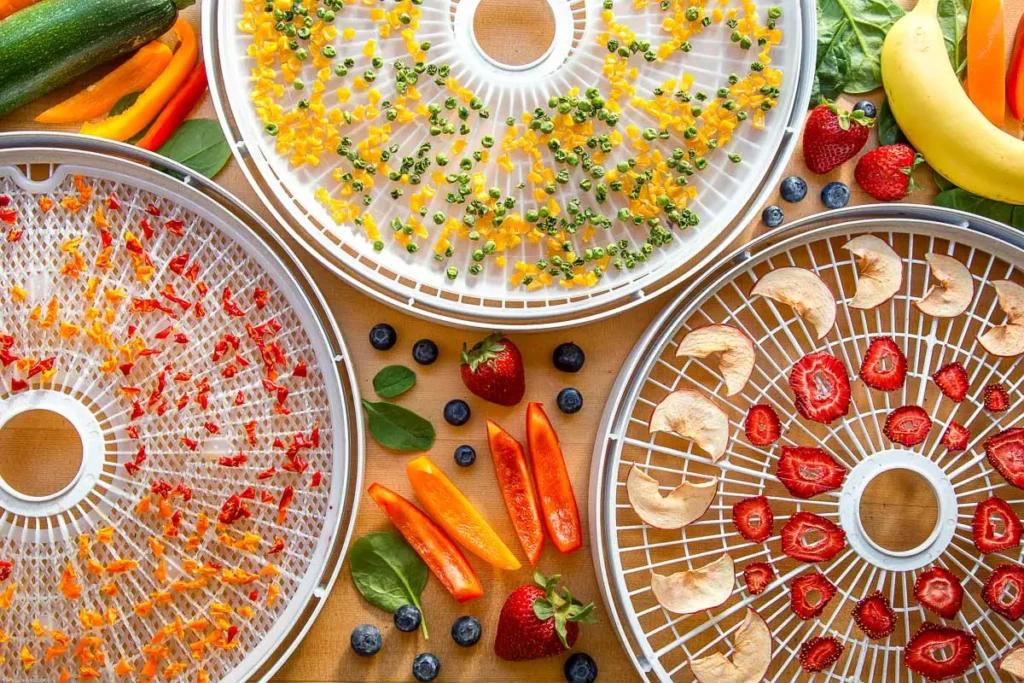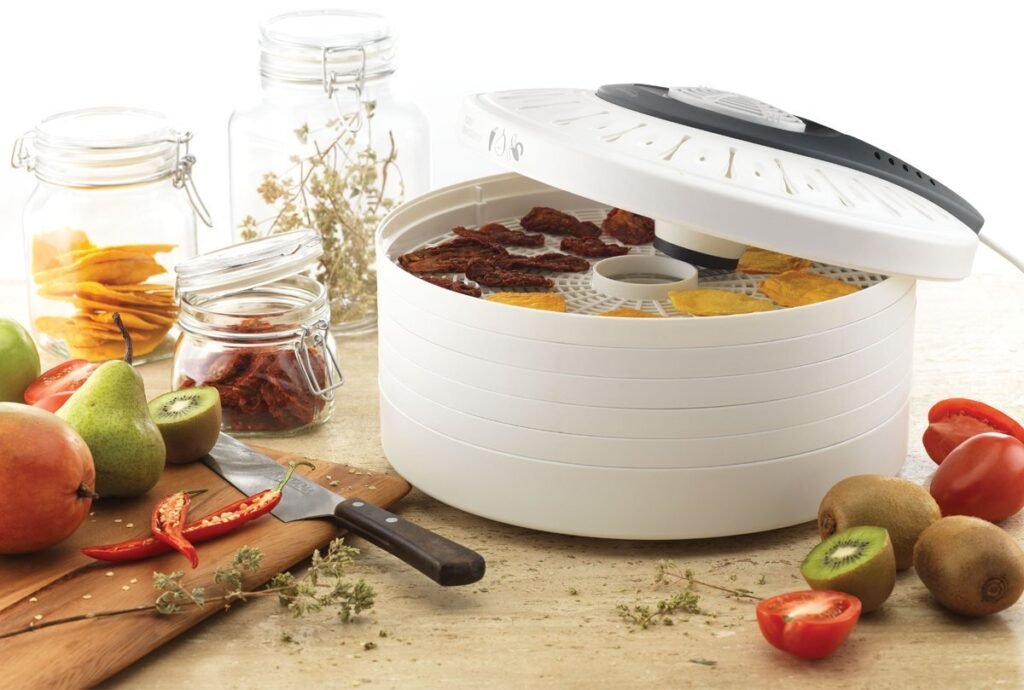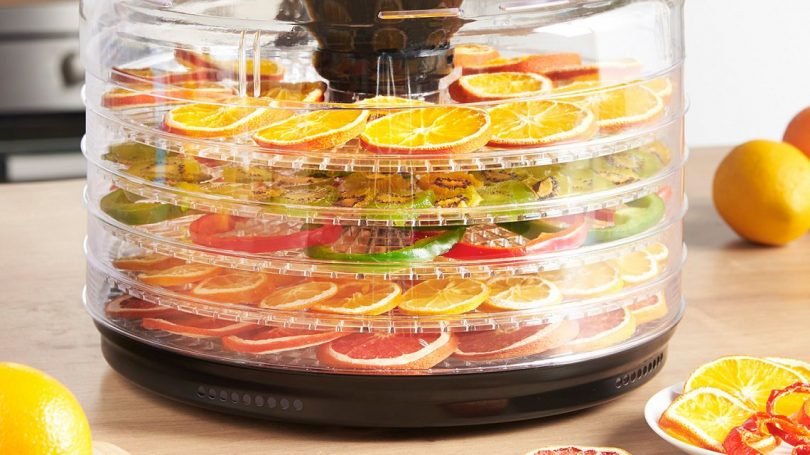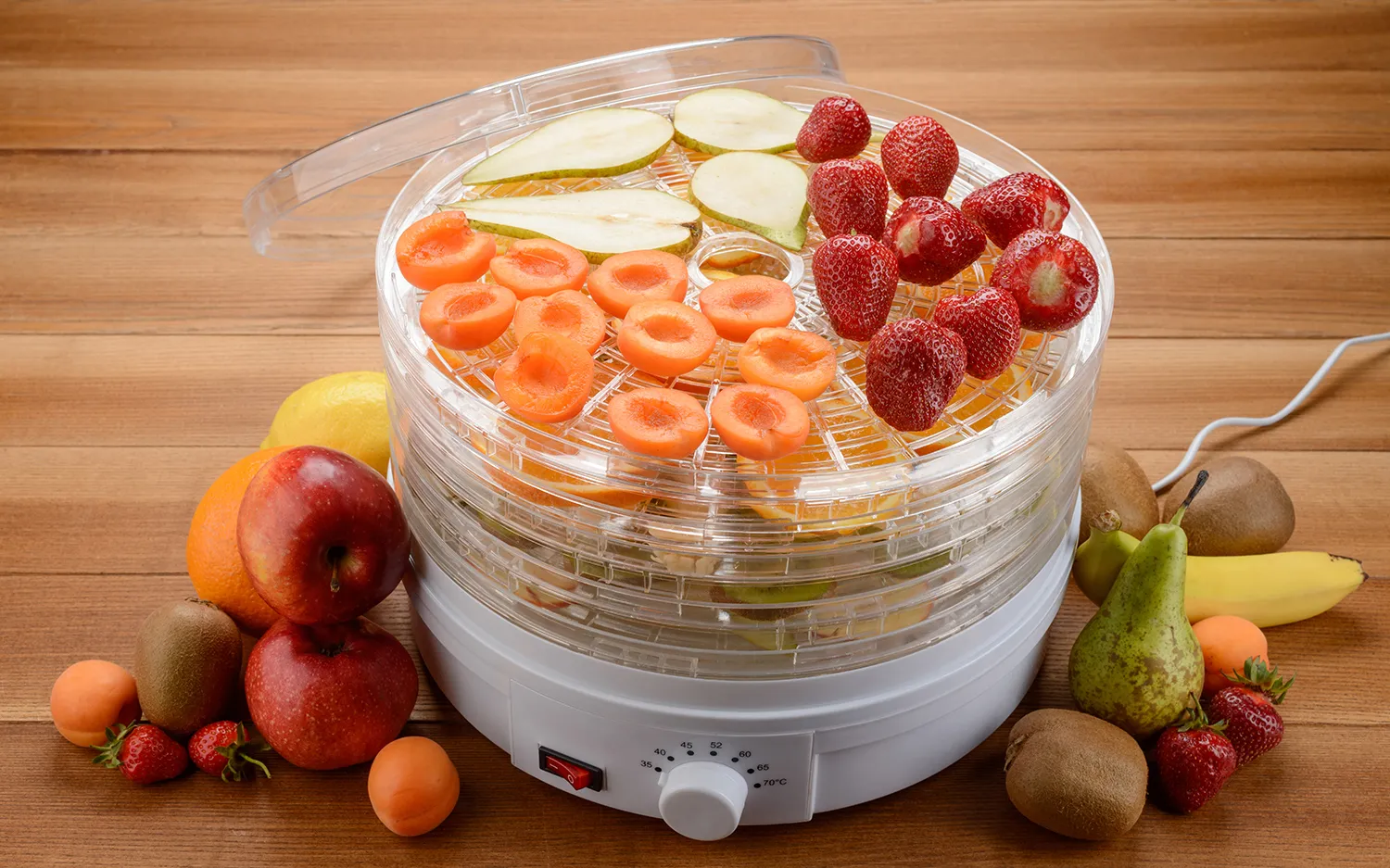Hello readers,
I am thrilled to present to you today’s blog post, where we delve into the world of vegetable dehydrators. As someone who understands the importance of making informed decisions when it comes to kitchen appliances, I can empathize with the overwhelming task of choosing the right vegetable dehydrator for your needs. That’s why I have meticulously crafted this comprehensive comparison guide to alleviate any doubts and assist you in taking the next step towards your culinary endeavors. So, let’s dive in and explore the fascinating world of vegetable dehydrators together!
The Ultimate Food Dehydrator Guide
In this video, we're going to walk you through the various options to dehydrate food and explain the things you need to know.
Types of Vegetable Dehydrators
When it comes to preserving vegetables and extending their shelf life, a vegetable dehydrator is a valuable tool to have in your kitchen. Vegetable dehydrators work by removing the moisture from the vegetables, allowing them to be stored for long periods of time without spoilage. In this blog post, we will explore the different types of vegetable dehydrators available in the market and discuss their pros and cons, helping you make an informed decision.
1. Tray Dehydrators
Tray dehydrators are one of the most common types of vegetable dehydrators. They feature a series of trays or screens stacked vertically, allowing for the dehydration of multiple batches of vegetables simultaneously. Here are some key points about tray dehydrators:
- Pros:
- Versatile: Tray dehydrators can handle a variety of vegetables, including leafy greens, root vegetables, and fruits.
- Large capacity: They can dehydrate a significant amount of vegetables at once.
- Even air circulation: Many tray dehydrators have built-in fans that ensure even distribution of heat and air.
- Adjustable temperature and timers: This feature allows you to customize the dehydration process according to the specific needs of different vegetables.
- Cons:
- Bulky: Tray dehydrators can be large and take up a considerable amount of counter or cabinet space.
- Longer drying time: Compared to other types, the drying time may be slightly longer in tray dehydrators.
2. Shelf Dehydrators
Shelf dehydrators, also known as cabinet dehydrators, are another popular option for vegetable dehydration. In these dehydrators, the shelves are horizontally arranged, resembling a small cabinet. Let’s discuss the pros and cons of shelf dehydrators:

- Pros:
- Uniform drying: Shelf dehydrators offer even air circulation, ensuring consistent drying across all shelves.
- Compact design: They are generally smaller in size compared to tray dehydrators, making them suitable for kitchens with limited space.
- Easy to use: Shelf dehydrators often come with user-friendly controls and settings.
- Cons:
- Limited capacity: The number of shelves in shelf dehydrators is usually limited, resulting in less dehydration capacity compared to tray dehydrators.
- Restricted size options: Some shelf dehydrators may not accommodate larger vegetables or bulky batches.
3. Solar Dehydrators
For those looking for a more eco-friendly solution, solar dehydrators harness the power of the sun to dry vegetables. Here are some important details about solar dehydrators:
- Pros:
- Energy efficient: Solar dehydrators use renewable solar energy, reducing the reliance on electricity.
- Cost-effective: Solar dehydrators can help lower energy costs in the long run.
- Environmentally friendly: They have a minimal carbon footprint, making them an eco-conscious choice.
- Cons:
- Weather-dependent: Solar dehydrators rely on sunlight, so their performance may be limited on cloudy or rainy days.
- Slower drying process: Compared to electric dehydrators, solar dehydrators often take longer to dry vegetables.
Features to Consider
Are you considering purchasing a vegetable dehydrator to preserve your favorite fruits and veggies? With so many options available in the market, it can be overwhelming to choose the right one. To help you make an informed decision, we have compiled a list of key features that you should consider when selecting a vegetable dehydrator.
Capacity
The capacity of a vegetable dehydrator is an important consideration, especially if you have large quantities of produce to dehydrate. Here are some factors to keep in mind:
- Check the number of trays or shelves that the dehydrator offers. More trays mean more space for drying your vegetables.
- Consider the size of the trays or shelves. Larger trays allow you to fit more produce on each level.
- Look for adjustable shelving options. This allows you to accommodate taller items, such as cornstalks or longer beans.
Temperature Control
Proper temperature control is crucial for effective dehydration. Having the ability to adjust and regulate the temperature ensures that your vegetables are dried evenly and thoroughly. Here’s what you should look for:
- Opt for a dehydrator with adjustable temperature settings. This allows you to set the optimum temperature for different types of produce.
- Look for a dehydrator with a wide temperature range. This versatility allows you to dehydrate a variety of foods, from herbs at low temperatures to meat jerky at higher temperatures.
Airflow System
An efficient airflow system ensures that hot air is evenly distributed throughout the dehydrator, resulting in uniform drying. Look for the following features:
- Seek dehydrators with a rear-mounted fan. This design promotes better air circulation and prevents flavors from mixing between trays.
- Consider models with a removable or washable air filter. This feature helps keep the air flowing smoothly and prevents any dust or particles from contaminating your produce.
Energy Efficiency
Energy efficiency is not only environmentally friendly but also saves you money in the long run. Look for the following energy-saving features:
- Choose a dehydrator with a timer. This allows you to set the required drying time, preventing over-drying and unnecessary energy consumption.
- Look for dehydrators with an auto-shutoff feature. This ensures that the unit turns off automatically once the set time has elapsed, eliminating any risk of overheating.
Noise Level
Nobody wants a noisy kitchen appliance that disrupts the peaceful atmosphere. Consider the following:
- Look for models with a quiet operation. This makes it more enjoyable to dehydrate your vegetables without the incessant noise.
- Read customer reviews or product specifications for information on noise levels. This will give you an idea of how loud or quiet the dehydrator is during operation.
By keeping these key features in mind, you can choose a vegetable dehydrator that meets your specific needs and preferences. Don’t forget to compare different models to find the one that offers the best combination of features and value for your money. Happy dehydrating!
Note:
This blog section does not include a conclusion.
User Reviews and Ratings
When shopping for a vegetable dehydrator, it can be overwhelming to sift through countless options and determine which one is the best fit for your needs. This is where user reviews and ratings come in handy. By taking the time to read what other customers have experienced with a particular product, you can gain valuable insights and make an informed decision.
1. Unbiased Feedback
User reviews provide a candid and unbiased perspective on a vegetable dehydrator. Unlike product descriptions or marketing materials, user reviews are written by individuals who have actually used the product in their own homes. This allows you to hear firsthand and honest accounts of its performance, reliability, and overall satisfaction.
2. Quality Assessment
By examining user ratings, you can easily identify the overall quality of a vegetable dehydrator. Higher ratings indicate that the majority of users are satisfied with the product, while lower ratings suggest potential issues or limitations. Pay attention not only to the average rating but also the number of ratings received, as a high rating with only a handful of reviews may not be as reliable as a slightly lower rating with a significant number of reviews.
3. Detailed Experiences
User reviews often contain valuable details about the specific features, benefits, and drawbacks of a vegetable dehydrator. By reading these reviews, you can gain insight into how well the dehydrator performs in terms of temperature control, drying efficiency, noise level, and durability. Look for reviews that mention factors relevant to your specific needs, such as the capacity of the dehydrator or the ease of cleaning.
4. Tips and Troubleshooting
In addition to providing overall feedback, user reviews often offer helpful tips and troubleshooting advice. Some reviewers may share their favorite recipes or suggest modifications to optimize the dehydrator’s performance. These insights can be extremely valuable, especially if you are new to using a vegetable dehydrator or want to experiment with different recipes and techniques.
Tips for Evaluating User Reviews and Ratings
To make the most of user reviews and ratings, follow these tips for effective evaluation:
- Consider a variety of sources: Look for reviews on multiple platforms, including e-commerce websites, forums, and social media groups. This will give you a more comprehensive understanding of the product’s strengths and weaknesses.
- Beware of extreme reviews: While it’s important to consider both positive and negative reviews, be cautious of excessively glowing or overly critical reviews. These may be biased or even fake. Focus on reviews that provide detailed and balanced perspectives.
- Look for common themes: Pay attention to recurring comments across multiple reviews. If several users mention a specific issue or praise a particular feature, it is likely to be a reliable indicator of the product’s performance.
- Consider your own needs: Remember that not all negative reviews may be relevant to your specific needs. If a reviewer complains about a feature that you don’t prioritize or doesn’t apply to your intended use, it may not be a significant drawback for you.
In summary, user reviews and ratings are valuable resources when considering the purchase of a vegetable dehydrator. They offer unbiased feedback, help assess quality, provide detailed experiences, and offer useful tips. By evaluating these reviews effectively, you can confidently select a vegetable dehydrator that meets your requirements and expectations.
Price Comparison
When it comes to preserving vegetables, a vegetable dehydrator is an essential tool for any kitchen. With the right dehydrator, you can easily dry your vegetables for storage, ensuring that they retain their nutrients and flavors for an extended period. However, with so many options available in the market, it can be overwhelming to choose the right one that offers the best value for your money. In this blog section, we will compare the prices of different vegetable dehydrators, considering their features and overall value for money.

Factors to Consider
Before we dive into the price comparison, it’s essential to consider a few key factors when purchasing a vegetable dehydrator:
- Capacity: The capacity of the dehydrator determines how much food you can process at once. Consider your needs and choose a dehydrator that offers sufficient capacity for your requirements.
- Temperature Control: Accurate temperature control is crucial for drying vegetables evenly and effectively. Look for models that allow you to adjust the temperature according to the specific requirements of different vegetables.
- Airflow and Distribution: Proper airflow and even distribution of heat are important for consistent drying. Dehydrators with a fan or convection system ensure optimal performance.
- Timer and Automatic Shut-off: A built-in timer and automatic shut-off feature allow you to set the desired drying time without constant monitoring.
- Ease of Use and Maintenance: Consider the dehydrator’s user-friendly features, such as removable trays, easy-to-clean components, and intuitive controls for hassle-free operation.
Price Comparison
Now let’s compare the prices of different vegetable dehydrators available in the market. Please note that these prices are approximate and may vary depending on the retailer and current promotions:
- Brand A Vegetable Dehydrator ($$)
- Capacity: 5 trays
- Temperature Control: Adjustable from 95°F to 165°F
- Airflow and Distribution: Built-in fan for even drying
- Timer and Automatic Shut-off: Yes
- Ease of Use and Maintenance: Removable trays and dishwasher-safe components
- Brand B Vegetable Dehydrator ($$$)
- Capacity: 9 trays
- Temperature Control: Adjustable from 90°F to 160°F
- Airflow and Distribution: Convection system for efficient drying
- Timer and Automatic Shut-off: Yes
- Ease of Use and Maintenance: Removable trays with non-stick coating for easy cleaning
- Brand C Vegetable Dehydrator ($)
- Capacity: 4 trays
- Temperature Control: Adjustable from 95°F to 155°F
- Airflow and Distribution: Fan-assisted for uniform drying
- Timer and Automatic Shut-off: No
- Ease of Use and Maintenance: Removable trays and easy-to-wipe interior
- Brand D Vegetable Dehydrator ($$)
- Capacity: 6 trays
- Temperature Control: Adjustable from 105°F to 165°F
- Airflow and Distribution: Rear-mounted fan for consistent drying
- Timer and Automatic Shut-off: Yes
- Ease of Use and Maintenance: BPA-free trays and dishwasher-safe components

Summary
In summary, choosing the right vegetable dehydrator requires careful consideration of various factors, including capacity, temperature control, airflow and distribution, timer and automatic shut-off features, as well as ease of use and maintenance. By comparing the prices and features of different models, you can make an informed decision and find the vegetable dehydrator that offers the best value for your money.
Remember, finding the right dehydrator is an investment that will benefit your kitchen and allow you to enjoy the taste and nutrition of dried vegetables all year round.
Key Takeaways and Final Thoughts
In conclusion, this blog post has presented a thorough comparison guide for vegetable dehydrators. Through an analysis of various types, important features, user feedback, and pricing considerations, readers are equipped to make informed decisions. Taking into account the factors highlighted, I suggest opting for a vegetable dehydrator that strikes a favorable balance between performance, features, and affordability.
Read More :








